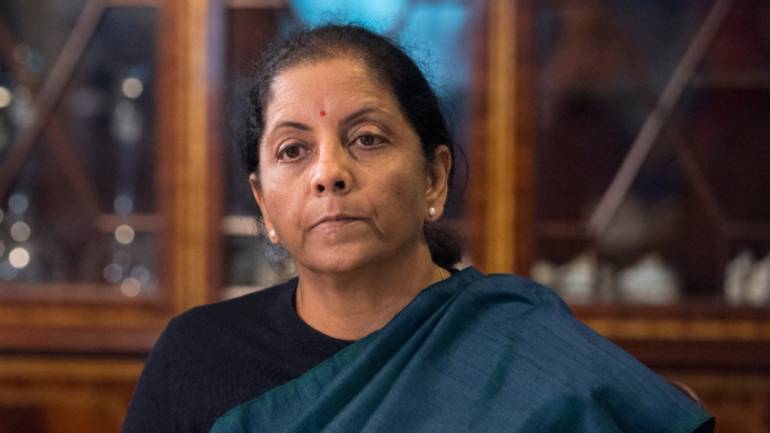As the country was voting in the 2019 general elections, the Modi government was very sure of coming back to power. Therefore the Chief Economic Advisor was given the go-ahead to prepare Economic Survey and Finance Ministry officials were asked to start budget preparation.
The newly appointed Finance Minister Nirmala Sitharaman will present the full-year budget for FY 20. The highly appreciated interim budget by Piyush Goyal has raised the standards of the critics for Sitharaman. As the Modi government came to power with an even greater majority, the reformist agenda could be emboldened by Sitharaman. Here is the list of expectation from the next budget.
Consumption
The Indian economy in today’s era is entirely driven by consumption, which has slowed down. Due to the crunch in the cash economy, people have restrained from spending, which is having a direct impact on the economy. In order to boost consumption, the pocket expenditure of consumers and corporate must be increased which will lead to a cash flow in the economy. The best possible method to ensure this would be a reduction of the direct and indirect taxes, coupled with an expansion of the government expenditure. The US had reduced the corporate tax to 21 percent, and India should reduce it at least reduce it to 25 percent. Meanwhile, the Income tax exemption limit could be increased from 5 lakh rupees (interim budget FY 20) to 8 lakh rupees in the full budget.
Agriculture
On the agricultural front, the Modi government needs to expand the PM KISAN scheme to landless labourers and scrap the Minimum Support Price (MSP) which has distorted the market forces for decades. In its present form, only the big farmers and traders benefit from the MSP and the small farmers sell their produce to traders for marginal amounts.
Exports
The Modi government had initiated the ‘Make in India’ with an aim to make India the ‘factory of the world’. The aim is to minimize imports and maximize exports. Along with lines of China, which gives subsidies to exports, the Finance Minister could start such incentives for the Indian exporters. With an increase in the exports, the huge labour force of the country would be employed, which will lead to a double digit growth of the economy; not possible without robust manufacturing growth.
Privatization
Nirmala Sitharaman could take on an aggressive stance on the privatization of loss-making Public Sector Units, such as Air India. There were 331 Central Public Sector Units with an investment of 12,50,373 crore rupees at the end of the fiscal year 2017. Bharat Sanchar Nigam Ltd, Air India Ltd and Mahanagar Telephone Nigam Ltd are among the worst performers in the public sector companies. The number of loss making CPSEs have grown from 54 in 2007-08 to 82 in 2016-17, which have inculcated to losss of 25,045 crore rupees. As per PM Modi’s vision of ‘Government has no business to do business’, these CPSEs should be privatized.
GST 2.0
With the implementation of GST in the first Modi term, the hard work to create a single market has already been done. Now, the country’s indirect taxation structure is in tune with that of 140 countries around the world. With this budget, the finance ministry under Nirmala Sitharaman needs to bring real estate, electricity, fuel and alcohol under the GST framework. The Modi government also needs to bring down the number of tax slabs from 5 (nil, 5%, 12%, 18% and 28%) to three (nil, 5 and 12) slabs.
Land Reforms
The land acquisition laws of the country are very rigid which makes procurement of land by the government and the corporate, a tough task. The government also regularly faces problems in procurement of land for important public works such as the building of highways and road construction. For this reason, the Right to Fair Compensation and Transparency in Land Acquisition, Rehabilitation, and Resettlement Act, 2013 needs to be amended. Nirmala Sitharaman must invest political (building consensus among states like Jaitley did for GST) and intellectual capital for these land reforms.
Labour reforms
At present, the country has 37 central laws to regulate the labour. The economic discourse in the country has been dominated by socialism since the independence and therefore ‘labour’ is given priority over ‘capital’. The successive governments brought different labour laws for different sectors to give a sense of entitlement to certain sectors. There are 1,200 minimum wages related to 429 types of scheduled employments. The Finance Ministry needs to unify the labour laws and compress them so that just remuneration can be given to all, without any scope of overlapping.
Capital Reforms
The Modi government also needs to implement much-needed reforms in the financial sector for the availability of capital to businesses. The ‘cost of capital’ across the world is much cheaper as compared to India. Since Shaktikanta Das became governor of RBI, the central bank has grown quite liberal on lending rates. Now, the Modi government needs to reform the financial sector to provide consumer protection to people investing in different financial products such as Mutual Funds, Insurance, Shares and Bonds, so that the companies need not be dependent on banks for capital requirements. These efforts are essential for economic growth.
